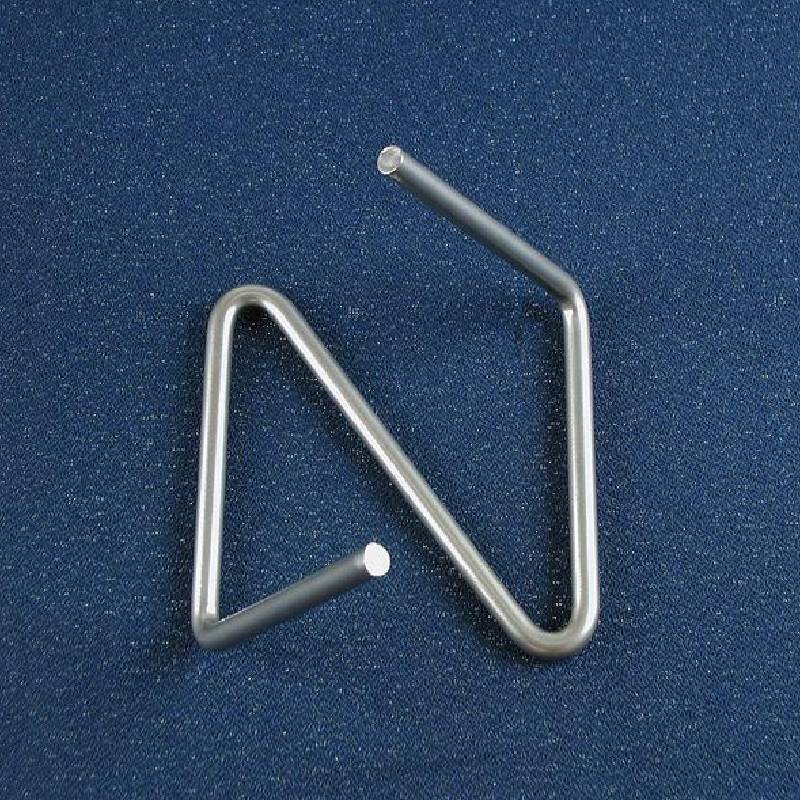
- Mobile Phone
- +8613931874955
- sales@cntcmetal.com
brick veneer ties
The Importance of Brick Veneer Ties in Modern Construction
Brick veneer has become one of the most popular choices for building exteriors due to its aesthetic appeal and durability. However, the effectiveness of brick veneer systems largely depends on the use of appropriate structural components, including brick veneer ties. These ties play a critical role in ensuring the stability and longevity of brick veneer walls, particularly in windy or seismic areas. This article will explore what brick veneer ties are, their importance, types, installation guidelines, and maintenance considerations.
What Are Brick Veneer Ties?
Brick veneer ties are metal connectors that are used to secure the brick veneer to the underlying structural framing of a building. They act as a bridge between the veneer and the wall or sheathing of the structure, providing the necessary support to keep the bricks in place. Without these ties, the brick veneer could become loose or detach from the building, leading to potential hazards and structural damage.
Importance of Brick Veneer Ties
One of the primary functions of brick veneer ties is to provide lateral support to the brick facade. In the case of extreme weather conditions, such as high winds or earthquakes, these ties are essential to preventing the veneer from cracking, bowing, or collapsing. The ties also accommodate the natural expansion and contraction that occurs with temperature changes, ensuring that the brick veneer can move without damage.
Moreover, brick veneer ties contribute to the overall structural integrity of a building. They help distribute the physical loads from the brick veneer to the underlying frame, reducing the risk of undue stress on both the bricks and the wall. This is particularly important in multi-story buildings, where the weight of the bricks can be substantial.
Types of Brick Veneer Ties
There are various types of brick veneer ties available on the market, each designed for specific applications and building codes. The most common types include
1. Metal Ties Typically made of galvanized steel or stainless steel, these ties are corrosion-resistant and provide strong support. They are often used in residential and commercial buildings.
2. Wire Ties These are simple, flexible wire connectors that can be easily installed. They are generally used in lower-load applications but are effective for smaller brick veneer installations.
brick veneer ties

3. Expansion Ties Designed to allow for thermal expansion, these ties provide additional flexibility to the brick veneer. They are particularly useful in regions with extreme temperature fluctuations.
4. L-shaped Ties These ties provide additional anchorage points and can help secure the veneer at corners and other joints.
When selecting the appropriate tie, it is vital to consider factors such as the building height, local climate, and load requirements.
Installation Guidelines
Proper installation of brick veneer ties is essential for maximizing their effectiveness. Here are some key guidelines
- Spacing The ties should be spaced according to local building codes, generally ranging from 16 to 24 inches apart vertically and horizontally. However, this can vary based on the height of the wall and type of tie used.
- Placement Ties should be installed at the appropriate elevation to support the weight of the brick veneer. They must be anchored securely to the wall framing or sheathing, avoiding any gaps that could compromise their strength.
- Sufficient Embedment The ties should be embedded into the mortar joints of the bricks to achieve maximum load-bearing capacity. Typically, the embedment depth should be at least 1 inch.
Maintenance Considerations
Regular maintenance of brick veneer ties is crucial for the long-term stability of the building. Homeowners and building managers should conduct periodic inspections to check for signs of rust, corrosion, or loosening of the ties. Over time, exposure to moisture and environmental elements can lead to degradation, so proactive measures, such as sealing any cracks in the masonry and ensuring proper drainage, can mitigate issues.
In conclusion, brick veneer ties are a fundamental component in the construction of brick veneer systems. They ensure safety, aesthetics, and durability, contributing significantly to the overall performance of brick buildings. By understanding their importance, selecting the right type, adhering to proper installation practices, and maintaining them regularly, builders and property owners can enjoy the benefits of brick veneer for years to come.
share:
-
Why Sacrificial Formwork Is Redefining Underground ConstructionNewsJun.06,2025
-
The Structural Dynamics of Modern Concrete: How Snake Spacers Revolutionize Flexible ReinforcementNewsJun.06,2025
-
Snake Spacers Smart-Lock Concrete Reinforcement with Surgical PrecisionNewsJun.06,2025
-
Snake Spacers: Reinforcement Precision for Modern Concrete ProjectsNewsJun.06,2025
-
Snake Spacers Powering Concrete's Structural DNANewsJun.06,2025
-
Slither into Success: Snake Spacers' Precision Bite for Unbreakable ReinforcementNewsJun.06,2025
-
Sacrificial Formwork: Building Stronger, Faster, and Safer StructuresNewsJun.06,2025



















